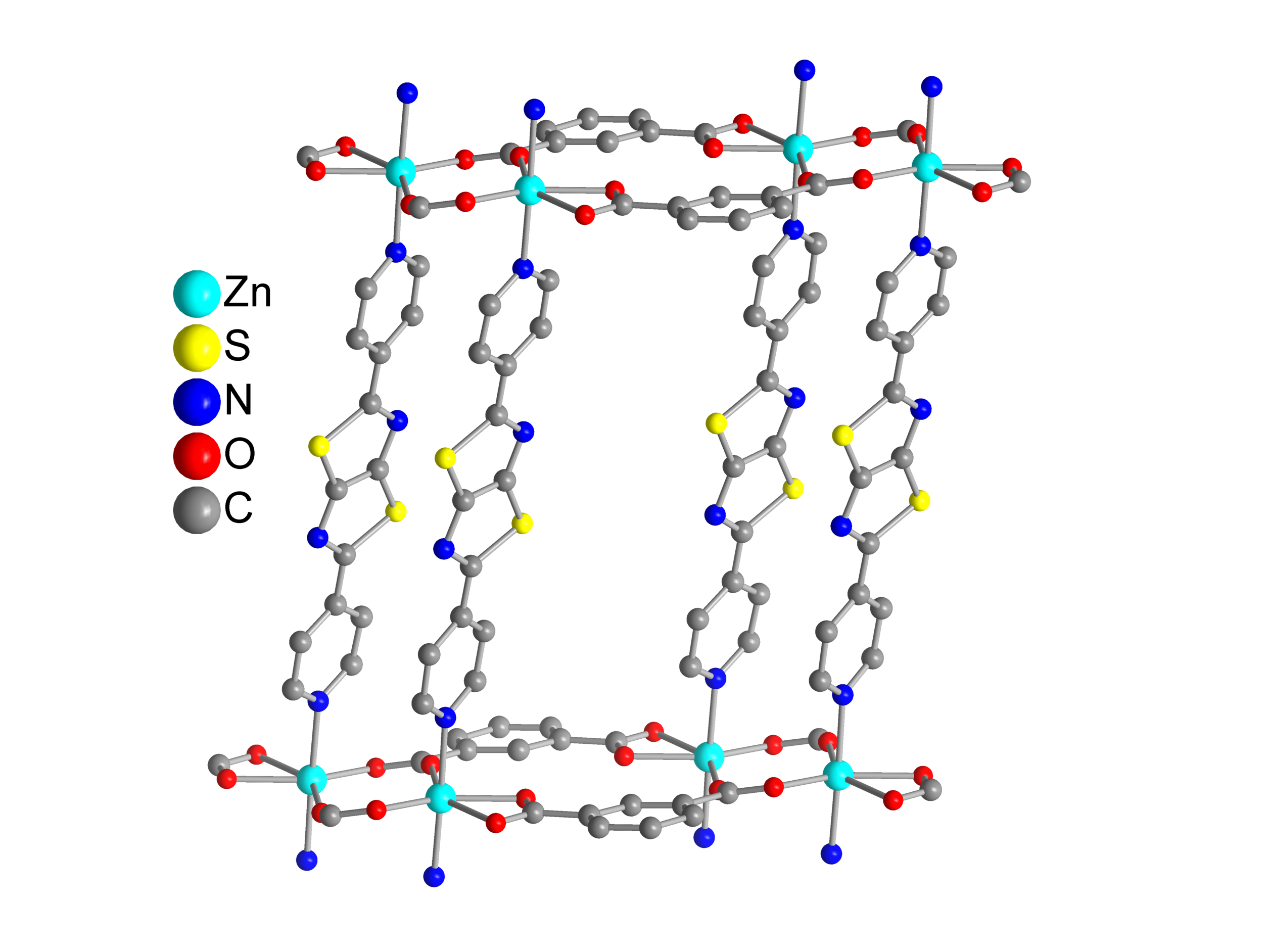The synthesis and structure of the 4,4′-dipyridyl N,N′-donor ligand with a central thiazolo[5,4-d]thiazole (tztz) unit, named Dptztz is presented. With the linker Dptztz and isophthalate (benzene-1,3-dicarboxylate, 1,3-BDC2−) the mixed-linker, two-dimensional coordination network [Zn(1,3-BDC)Dptztz]·DMF could be obtained (DMF = dimethylformamide), which belongs to the class of coordination polymers with interdigitated structures (CIDs). The incorporated DMF solvent molecules can be removed through solvent exchange and evacuation such that the supramolecular 3D packing of the 2D networks retains porosity for CO2 adsorption in activated [Zn(1,3-BDC)Dptztz]. The first sorption study of a tztz-functionalized porous metal-organic framework material yields a BET surface of 417 m2/g from CO2 adsorption. The heat of adsorption for CO2 exhibits a relative maximum with 27.7 kJ/mol at adsorbed CO2 of about 4 cm3/g STP which is interpreted as a gate-opening effect.

